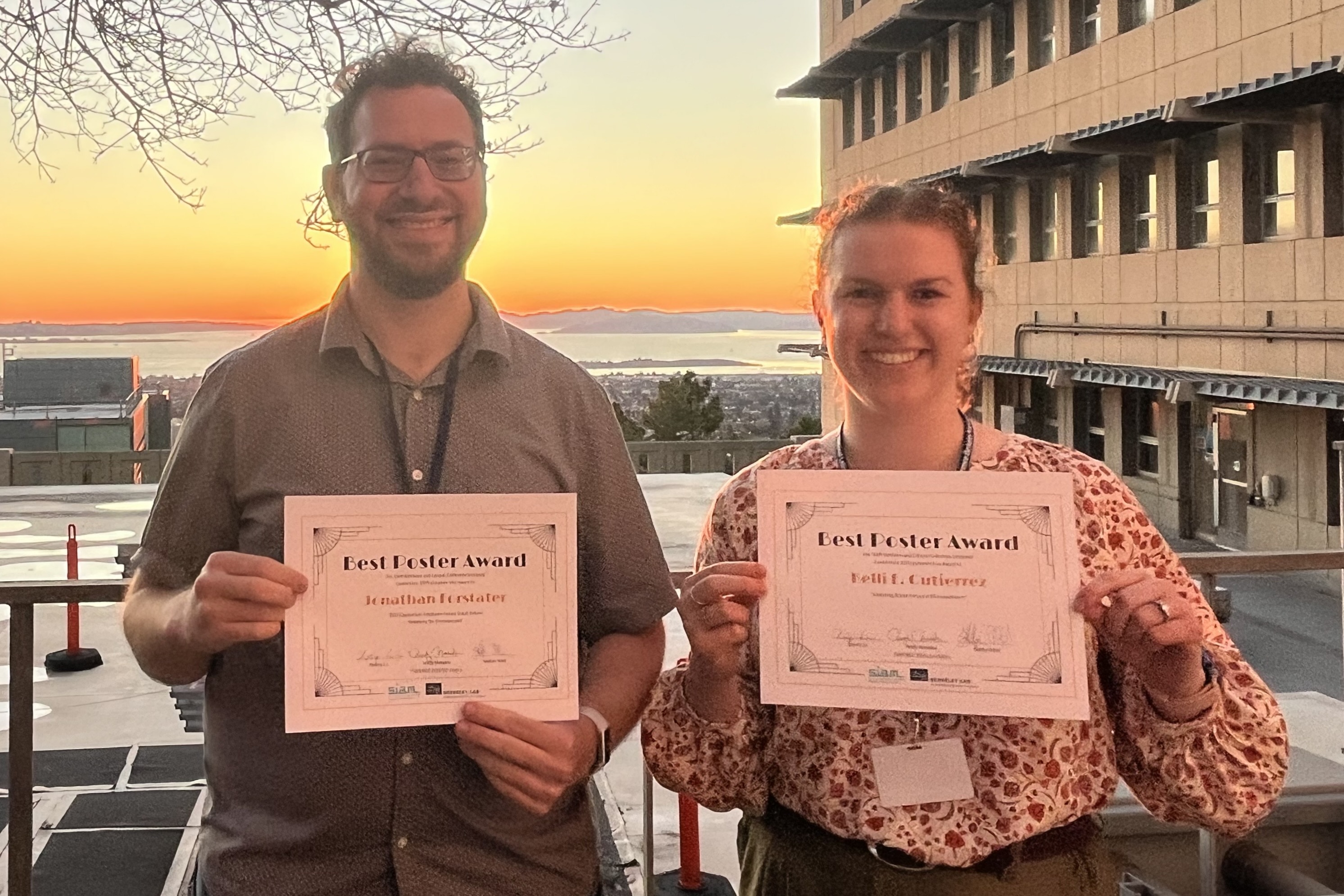
We’re thrilled to share that two of our applied mathematics students, Jon Forstater (Thomas Strohmer) and Kelli Gutierrez (Bob Guy), were honored with Best Poster Awards at the 2025 SIAM Northern California Chapter (SIAM NCC) meeting. Their work showcases the depth, creativity, and interdisciplinary reach of research happening in our graduate program.
Jon Forstater: Multiscale Graph Learning for Proteins
Jon presented his poster titled “E(3)-Equivariant Fragment-based Graph Neural Networks for Biomolecules,” which has since been accepted to NeurIPS 2025 under the name “Towards Multiscale Graph-based Protein Learning with Geometric Secondary Structural Motifs.”
His research tackles fundamental challenges in protein modeling: how to efficiently learn multiscale structural representations and preserve long-range dependencies. Jon’s framework introduces a hierarchical graph architecture that mirrors the natural organization of proteins:
- Fine-grained subgraphs represent secondary structure motifs like alpha-helices, beta-strands, and loops.
- A coarse-grained graph connects these motifs based on spatial arrangement and orientation.
Two specialized graph neural networks (GNNs) operate at each level—one capturing local interactions within motifs, and the other modeling global relationships across motifs. This modular approach not only retains maximal expressiveness but also improves prediction accuracy and reduces computational cost across benchmarks.
Jon’s work exemplifies the power of geometric deep learning in biochemical applications and reflects the growing synergy between applied mathematics and machine learning.
Kelli Gutierrez: Modeling Motor Forces in Microswimmers
Kelli’s poster, “Analyzing Active Forces in Microswimmers,” explores the biomechanics of flagella-driven propulsion in microscopic organisms. Flagella are thin, threadlike filaments that move in a wavelike motion to enable cell swimming. Their waveform emerges from the coupled dynamics of the external fluid, mechanical properties, and active motor forces.
Kelli developed a computational model that uses experimental data from various fluid environments to infer how motor forces respond to external conditions. Her work sheds light on the mechanochemical feedback mechanisms that coordinate molecular motors.
By bridging experimental observations with mathematical modeling, Kelli’s research offers new insights into the physics of microswimmer locomotion and the role of fluid viscosity in biological systems.
Congratulations to Jon and Kelli for their outstanding contributions and well-deserved recognition. Their work highlights the vibrant research culture at UC Davis and the exciting frontiers of applied mathematics.

